DAY 13, MAY 18, Wednesday:
.Basilica Sagrada Familia, 9 am tickets bought online many days in advance.
11am, 900 m walk to Recinte Modernista de Sant Pau
3 PM English tour Palau de Musica Catalana
La Sagrada Familia ... Bible in stone
La Sagrada Familia is the most popular attractions in Barcelona, attracting nearly 2.8 million visitors each year.
Construction began in 1882 and continues through today, making it the largest unfinished Catholic church in the world.
Antoni Gaudi took over as architect the following year and worked on it until his death in 1926. It’s just over 70 percent finished now. Current architects are following Gaudi’s design, which is based on Gothic and Byzantine styles, with 18 towers of varying heights, each dedicated to a different biblical figure.
The church was consecrated in 2010, allowing services to be held onsite.
The real name of the church is the Expiatory Church of La Sagrada Família. The church is expiatory, meaning that it is being constructed to atone for wrongdoing or guilt, so the financing of the church is completely private. The admission charge paid by two and a half million visitors each year is what pays for the building construction. It is thought that it will be completed in the first third of this century.
3 FACADES, 2 DOMES, 18 TOWERS
Three facades represent the Nativity, the Passion and Death, and the Glory of Christ. The twelve towers symbolize the twelve apostles. Four monumental bell towers represent the four Evangelists. Two colossal domes represent Christ and the Virgin Mary. The temple crypt began by Villar was finished by Gaudi in 1885.
18 towers will decorate La Sagrada Familia when it is finished. The tallest tower of the church will be dedicated to Jesus. This tower will be surrounded by 4 smaller towers. They will represent the evangelists. The tower above the apse will be dedicated to the Virgin Mary. The 3 façades will have 4 towers each. These 12 towers will represent the 12 apostles. some of the apostle’s towers are topped with colorful rounded designs. These are fruits, used as symbols to represent the fruits of the spirit and the Eucharist, the body and blood of Christ.
PASSION FACADE
NATIVITY
on the Nativity facade which is a celebration of life in general, there are so many little details of plants, animals, literal natural elements that were copied one-to-one precisely
STAINED GLASS
As we enter, light streaming through the numerous stained glass stun us! Cool colors of green, blie on the west and warm colors of yellow, orange on the east walls
COLUMNS LIKE TREE TRUNKS
columns made of red porphyry and basalt in the shape of tree trunks make visitors feel like they are deep inside forest rather than a Roman Catholic church. To give them more depth, the columns branch out to give an illusion of palm trees as they work their way up to the ceiling. .


The columns themselves weren’t merely simple structures to Gaudí: their unique double twist design symbolizes the saints ascending into heaven and the angels descending to meet them. The lamps on each of these 36 columns gives greater context to the meaning of each structure. The four columns in the center of the church’s transept, for example, are in honor of the Evangelists. Their symbols—winged man for Matthew, winged lion for Mark, winged ox for Luke, and eagle for John—can be seen on the lamps. The remaining columns are dedicated to the twelve apostles, four Catalan bishoprics, 15 Spanish cities with archbishoprics, and five continents (Antarctica and Australia are excluded). On each lamp, there’s an intricate illustration of the patron saint of its diocese to bring color to the church
HIGH ALTAR
Sandwiched between two columns representing St. Peter and St. Paul is the Sagrada Familia's High Altar, made from a giant block of porphyry from Iran. Above the altar, a bronze Crucifixion of Christ is descending from the ceiling. The cross is surrounded by an elaborate canopy, which is the replica of the one made for the Cathedral in Mallorca. As a subtle nod to the traditional church design, Gaudí decorated the canopy with vines and grapes of vine. beyond the canopy, there’s a golden mosaic dome overhead. Not only does the mosaic illuminate the Sagrada Familia interior but it also represents Catholicism as a whole: the mosaic depicts a triangle within a circle, which symbolizes the Holy Trinity as a part of the greater world.
SIDE ALTAR



MUSEUM
JMJ MOTIF... JOSEPH, MARY, JESUS
spot it on an outside medallion, on the floor of the Temple at the center of the crossing, on the prie-dieus in the first row of the pews, in front of the presidential chair in the presbytery, and even on the Glory façade.
The “M” is made up of three vertical white stripes with a white vertical stripe on each side for Jesus and Joseph. The “J” for Jesus stretches upward until it reaches the cross of Christ to form the letter’s shape. The “J” for Joseph, on the other hand, mirrors Jesus by stretching downward until it reaches a flower with a rod, which symbolizes the Saint. There’s a gold crown that connects the three vertical lines for “M” to symbolize Mary as a queen. Beyond the stunning mosaics, there’s another anagram above the painting devoted to the Holy Family in the museum at the Temple. Subtle and smaller in scale, this “JMJ” is made with wood and gold-leaf. Here, the “J” for Jesus splits into three, becoming the nails of the crucifixion, while the “J” for Joseph stretches down until it becomes a flower. Mary is still crowned the queen but in this case, there’s a circle around the three vertical
PASSION FACADE DETAILS
NATIVITY DETAILS
Got out of the Basilica by 10.30
Recinte Modernista de Sant Pau
This hospital (Hospital of the Holy Cross and St. Paul) is a Modernist masterpiece by Lluís Domènech i Montaner and was finished in 1902. The
Hospital of the Santa Creu was founded in Ciutat Vella in 1401 and was the basis for the present hospital, which is
Europe's second oldest and used continuously to the present day. In 1902 a Barcelona-born banker, Pau Gil, who was living in Paris, donated a large amount of money to the hospital to expand it to the present site.
The new hospital decided to add the saint's name of its benefactor, Sant Pau, to the name of the hospital to honor him.
The former hospital, with a façade that resembles a church, is the top-ranked art nouveau site in Europe. Sant Pau Recinte Modernista was built in the first third of the 20th century as a hospital and healthcare research center. It served this purpose for 100 years, and today houses a variety of international organizations. The complex, with underground tunnels connecting the building has a pavilion that is devoted to the history of medicine in Barcelona.
there are
26 pavilions in a Neo-Mudejar style around the spacious grounds. The pavilions are linked by paths and are surrounded by gardens [a wedding reception was being held that evening, so prep was on when we visted.]
Palau de Musica Catalana
Built in the early 1900s, the Palau de la Musica Catalana is a tourist attraction in itself, with its stained glass windows and massive chandeliers.
The concert hall inside has seats arranged in three levels. The stained glass skylight is a masterpiece and is in the shape of an enormous drop of light. On the sides of the stage are huge sculptures of a winged horse, three muses called the Flowers of May, and the Valkyries.
The back of the stage has 18 sculptures of women playing historical musical instruments. The figures show half of the body of the women coming out of the wall. The lower part of the figures showing the dresses are done in glazed tile and are flat on the wall.
There are about two thousand large ceramic roses in different colors that adorn the ceiling.
This music 'palace' is one of the most beautiful buildings in Barcelona and also a Modernist masterpiece designed by a contemporary of Antoni Gaudi and the director of the School of Architecture of Barcelona. The palace was completed in 1908, only three years after it was started.
It has plenty of light because the side walls have many stained glass windows and a wonderful stained glass skylight. The palace has been built using many different materials, such as exposed brick, glazed tiles, glass and iron. There is a sea of flowers in the stained glass and ceramic tiles used that is really amazing to see.
There are
busts of Palestrina, Bach, Beethhoven, and Wagner in the front of the building.
FACADE
On the facade of the palace is a beautiful sculptural group that depicts a warrior, a beautiful woman, children, and youths.
WALK BACK HOME RELISHING THE SIGHTS
Drinking water fountain
Mannequin Piss of Barcelona...
report continues

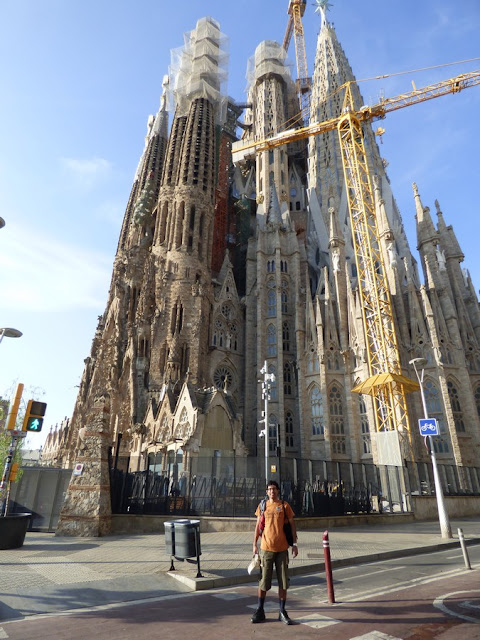













































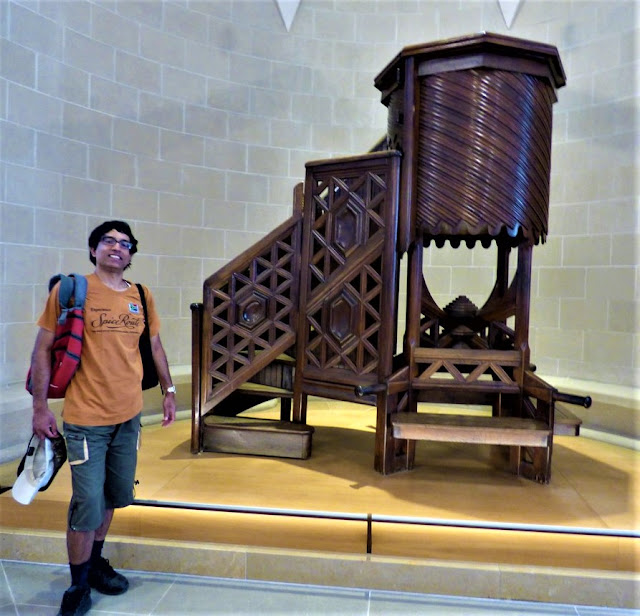






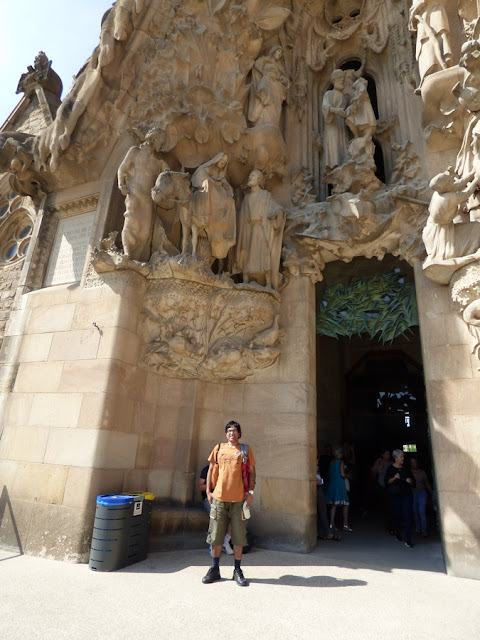











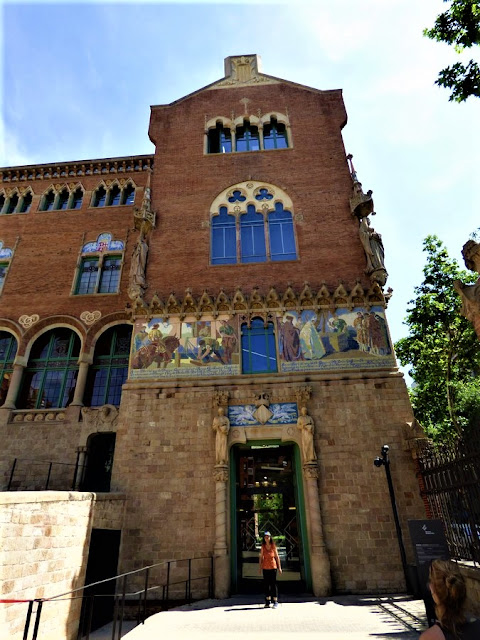









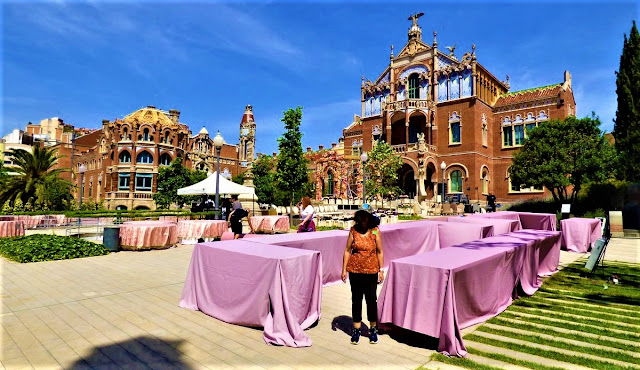
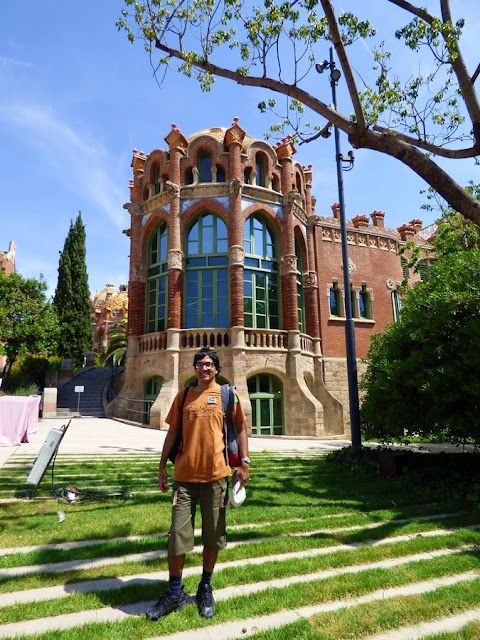


















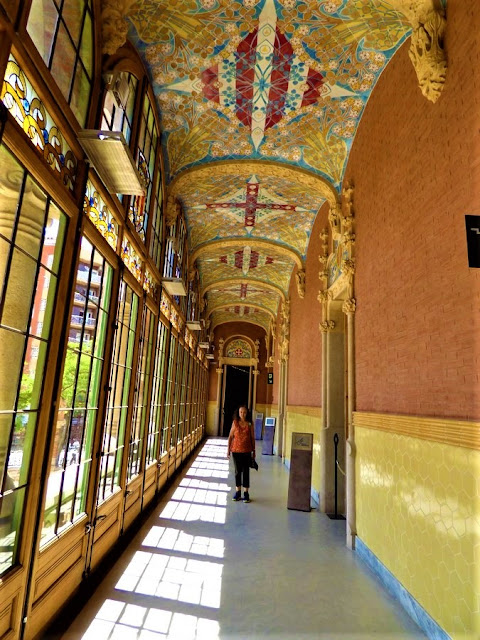








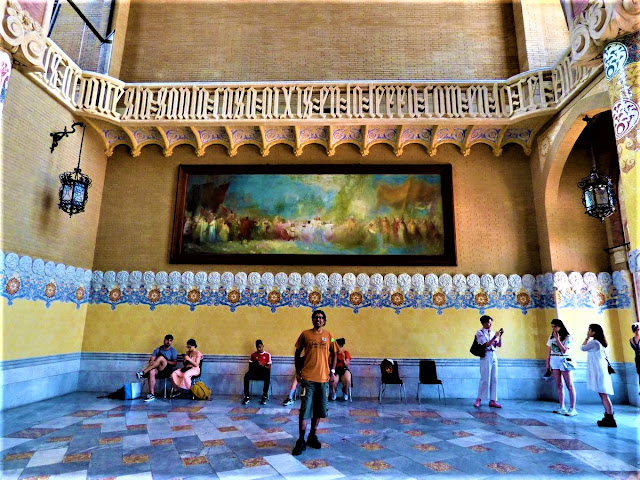

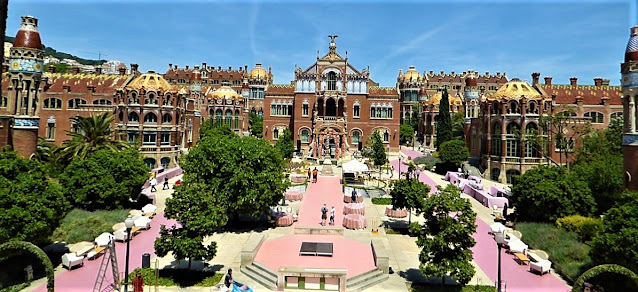


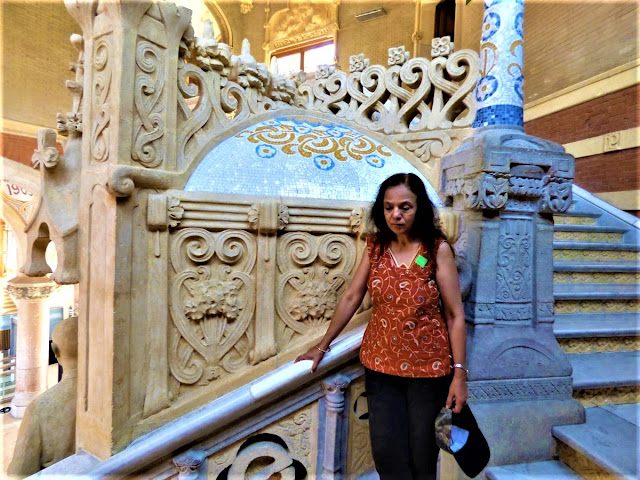






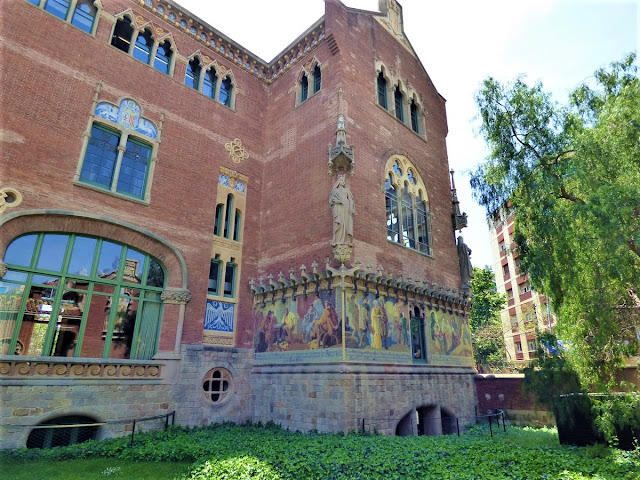
















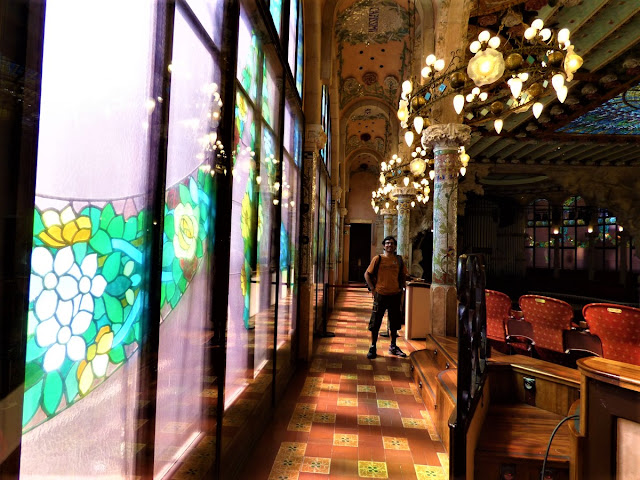


















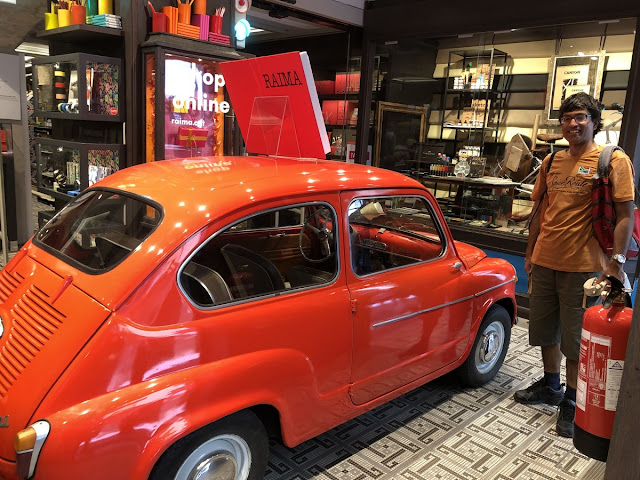







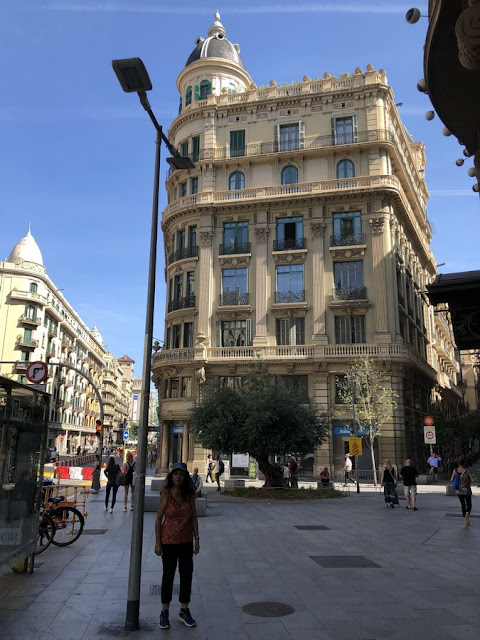
















No comments:
Post a Comment